The HDI printed circuit board is a multilayer printed circuit board with four or more layers, which is pressed sequentially in several press cycles.
("Sequential Build Up" or SBU for short). HDI stands for "High Density Interconnect".

HDI stands for "High Density Interconnect". These are multilayer PCBs with four or more layers that are built up sequentially ("Sequential Build Up" or SBU) in several press cycles.
This achieves higher packing densities and meets the requirements of state-of-the-art component development. This opens up completely new possibilities for your PCB layout in order to meet the ever-increasing miniaturization, which demands ever more complex circuits and components with extremely high pin counts.
Thanks to state-of-the-art production technology, layouts from a line/space of 75 µm are possible. The filling technologies of drill holes (e.g. microvia copper filling, plugging or resin filling) play a decisive role in the selection of an optimal rewiring strategy.
Multiple sequentially pressed multilayers (SBU) allow the individual components to be electrically connected to each other via drill holes using different drilling technologies and therefore more complex rewiring. This allows inner layers to be connected and unbundled without blocking the space for PCB components with high pin density on the outer layer.
In addition to through-holes, laser vias and internal holes (buried vias) are used for the connection to and on the inner copper layers. For a higher number of layers combined with an HDI design, the use of PCB base material with optimized Z-axis expansion is recommended.
Number of layers | ≤ 30 |
PCB thickness | 0.5 mm - 3.20 mm |
Materials | FR4, high frequency materials |
Glass transition temperature | (135), 150°C, 170/180°C |
Aspect ratio |
|
Advanced technologies | Viafilling type VII, microvia copper filling, Buried boreholes |
The specified values represent the maximum power spectrum and may be limited in certain combinations.
Solder resist masks
Additional prints
Edge metallization
In order to improve the EMC protection of a circuit board, to create an electrical contact to the housing of the assembly or to meet increased cleanliness requirements, the front sides of the circuit board contour can be metallized.
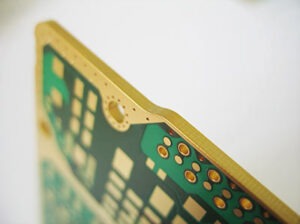
Milled vias
It is possible to produce application-specific components with so-called milled through-holes. The resulting circuit boards can be soldered onto another circuit board as components (interposer) due to their front-side contacting option.

Contour processing
Contour production: milling and scoring
Microvias (lasered) on outer layers
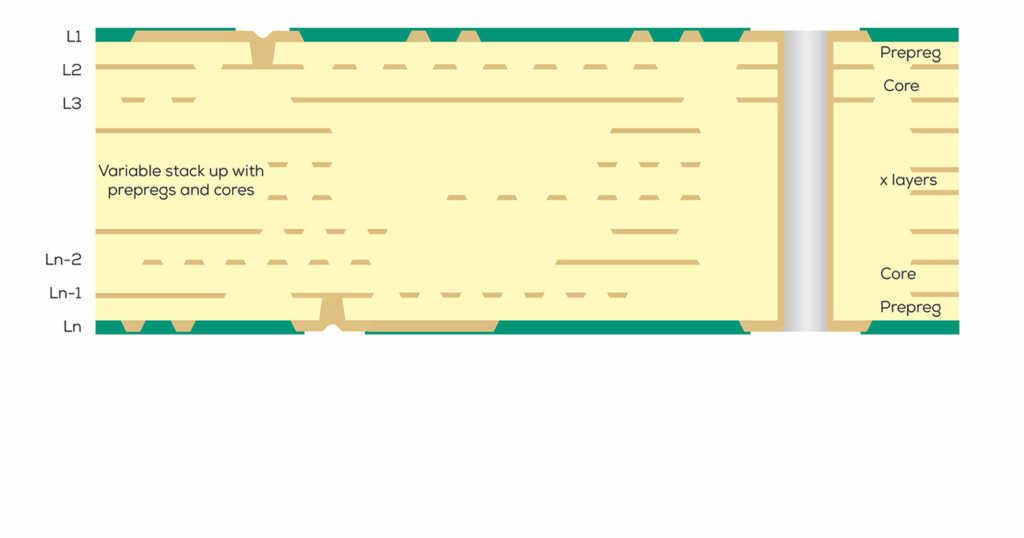
Microvias (lasered) in combination with plated-through laminates (mechanically drilled)
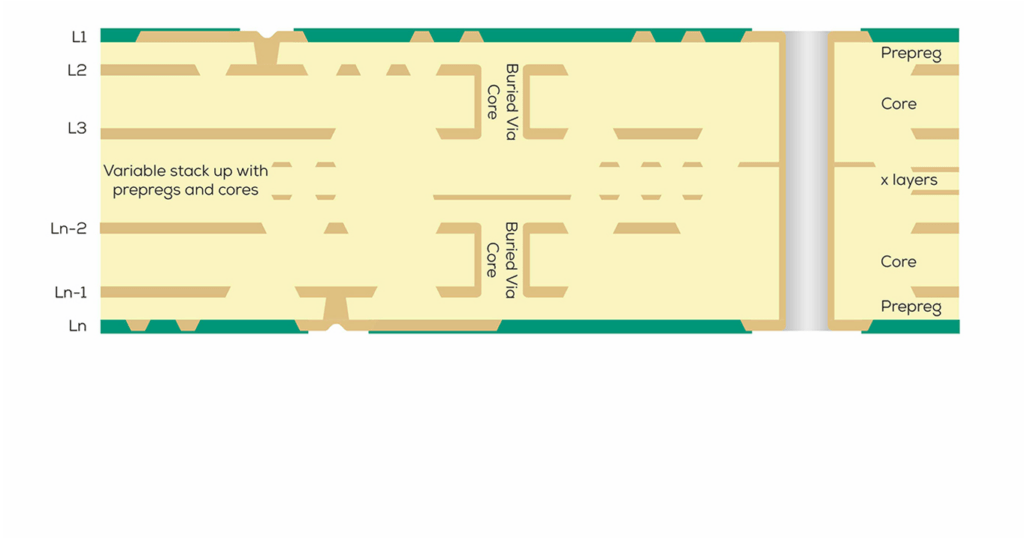
Microvias (lasered) in combination with buried vias (mechanically drilled)
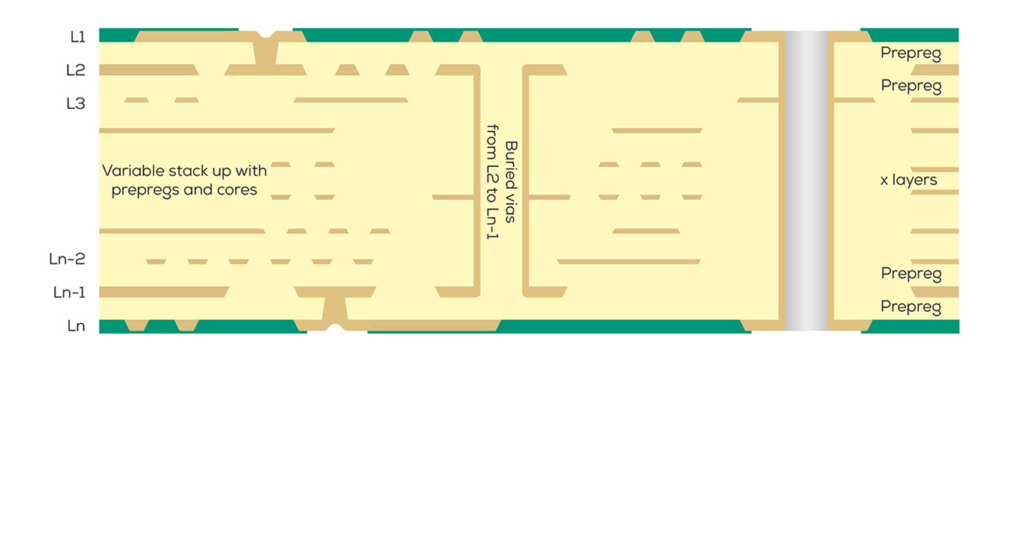
Staggered microvias (lasered) in combination with buried vias (mechanically drilled) - from L2 to Ln-1
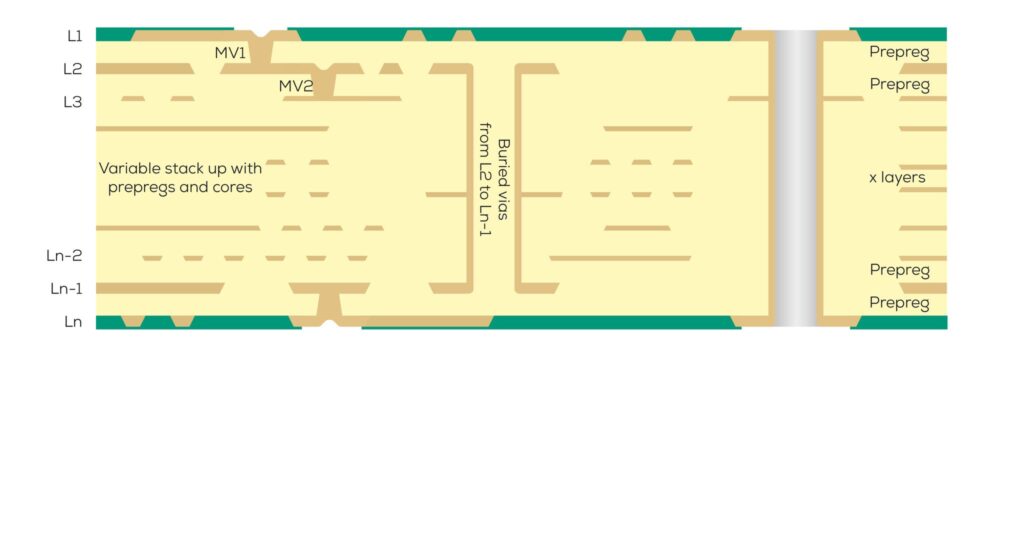
Staggered microvias (lasered) in combination with buried vias (mechanically drilled) - from L3 to Ln-2
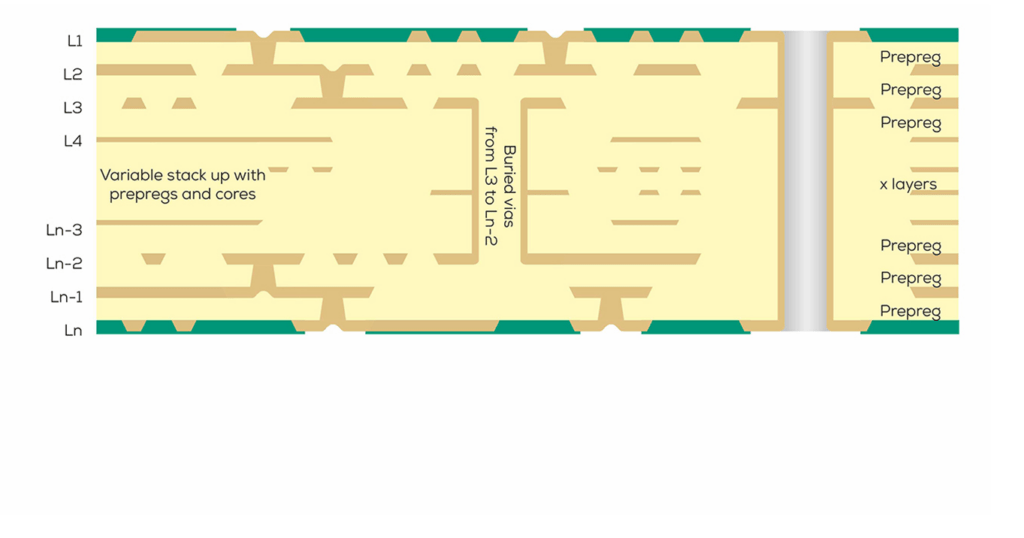
Stacked microvias (lasered) with microvia copper filling in combination with buried vias (mechanically drilled)
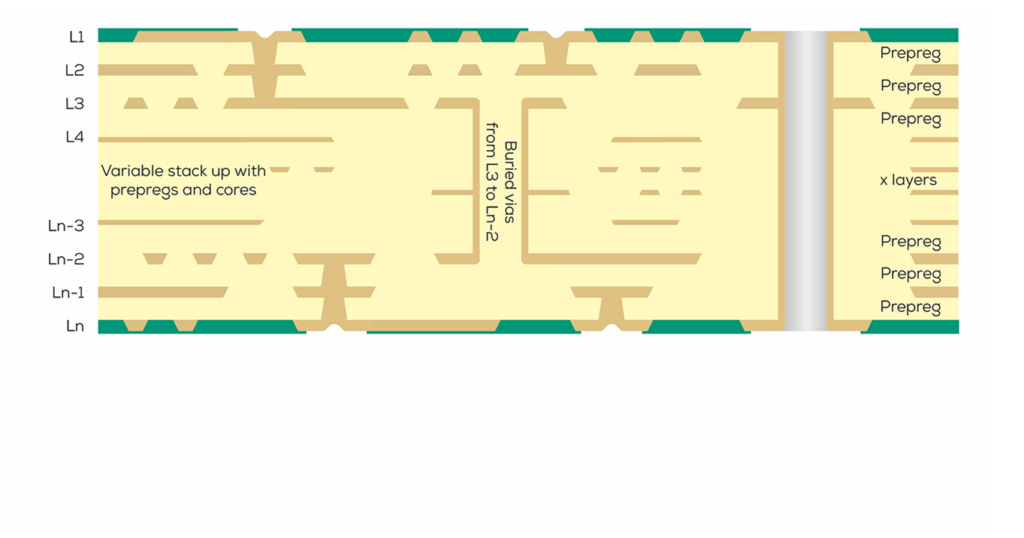
Double Core

HDI - Is it still possible? - Options for unbundling highly integrated components
The trend towards downsizing electronic assemblies and elements continues unabated and demands ever higher integration densities per PCB area. HDI circuits offer the solution with their highly compact track structures, tiny holes and microvias. But it is the small details that determine the feasibility and reliability of your design, especially in the tightest of spaces. At XPERTS, Thomas Doberitzsch and Dirk Deiters are dedicated to precisely these aspects.
In this online seminar


The smart platform for fast and reliable PCB development.
We have bundled all the parameters for you in our Design Compass.
Take advantage of the direct line to the experienced PCB experts in our technical support team. We are happy to support you in every phase of your project.

Talk to us in the early development phases of your project and contact our team of experts. Together we will find the solution that will make your product even better.

With a workshop at our premises or at your site, we give you the opportunity to discuss the key technical aspects and features of your project in detail.

From design and layout checks to various calculations and thermal analyses - the experienced, competent Technical Support team will be happy to help you.